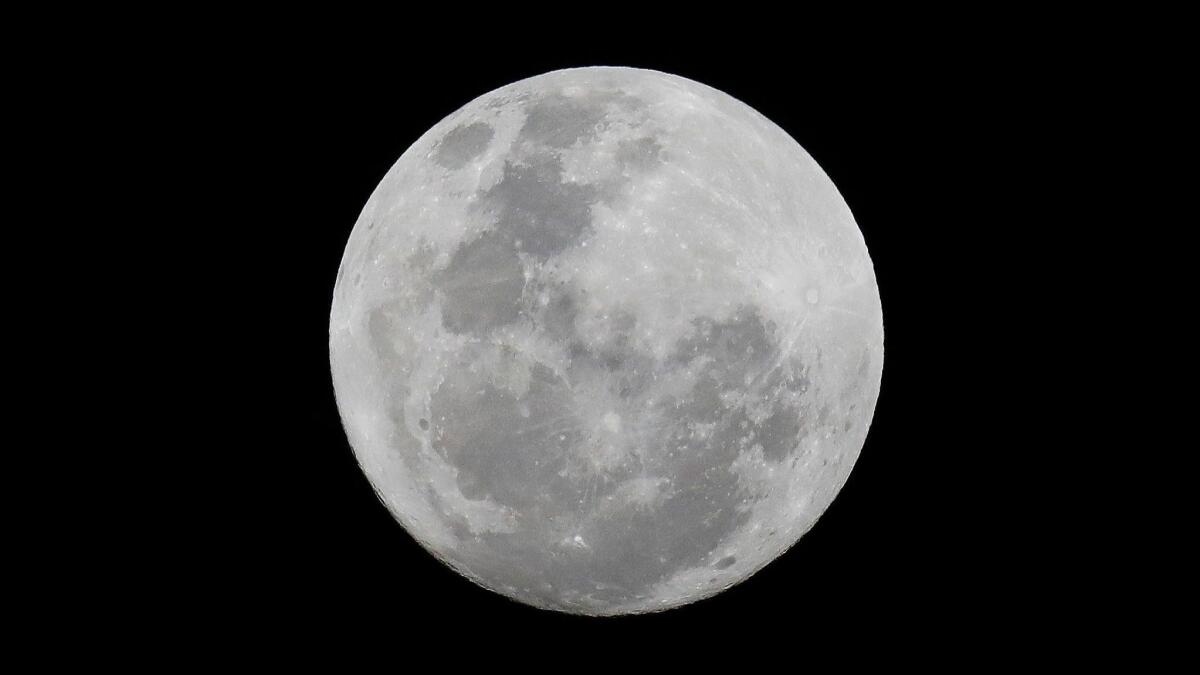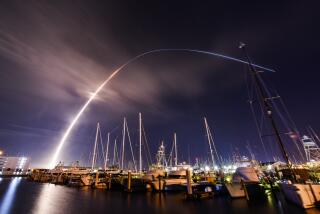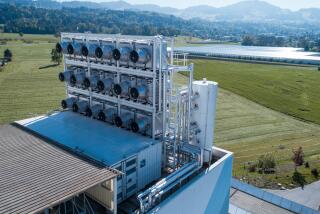NASA selects nine companies that could send science experiments to the surface of the moon

NASA has selected nine companies, including one based in Mojave, that can bid on contracts to carry science experiments to the surface of the moon for the agency.
The Commercial Lunar Payload Services contracts will have a combined maximum value of $2.6 billion during the next 10 years, NASA said. The first such missions could be launched as soon as next year.
The companies selected are: Astrobotic Technology Inc. of Pittsburgh; Deep Space Systems Inc. of Littleton, Colo.; Draper of Cambridge, Mass.; Firefly Aerospace Inc. of Cedar Park, Texas; Intuitive Machines of Houston; Lockheed Martin’s space division in Littleton; Masten Space Systems Inc. of Mojave; Moon Express of Cape Canaveral, Fla.; and Orbit Beyond of Edison, N.J.
Other companies could be added later to this list, said Thomas Zurbuchen, associate administrator for NASA’s Science Mission Directorate, during a Thursday press conference.
The companies will be responsible for developing robotic lunar landers to deliver the payloads safely to the surface of the moon and will need to arrange launch services for the missions.
None of the companies have been awarded funding yet, and NASA said it has not provided development funding. The minimum award each of the companies could win is $25,000, NASA said.
The program is part of NASA’s effort to buy services from commercial companies, rather than relying on its own developed capabilities.
Other examples include the launches NASA buys from Hawthorne-based SpaceX and Northrop Grumman Corp. to deliver supplies to the International Space Station. Next year, SpaceX and Boeing Co. will fly the first demonstration missions of capsules the two companies have developed under NASA contracts that are intended to ferry astronauts to the space station.
During Thursday’s news conference, NASA Administrator Jim Bridenstine cited a space policy directive signed by President Trump about a year ago that called for a return to the moon with the help of commercial partners. “We want to be one customer of many customers in a robust marketplace between the Earth and the moon,” he said.
Twitter: @smasunaga
UPDATES:
1:45 p.m.: This article was updated to include details on funding for the contracts.
1:20 p.m.: This article was updated to include details that NASA has not provided development funding to the selected companies.
This article was originally published at 1:10 p.m.
More to Read
Inside the business of entertainment
The Wide Shot brings you news, analysis and insights on everything from streaming wars to production — and what it all means for the future.
You may occasionally receive promotional content from the Los Angeles Times.











